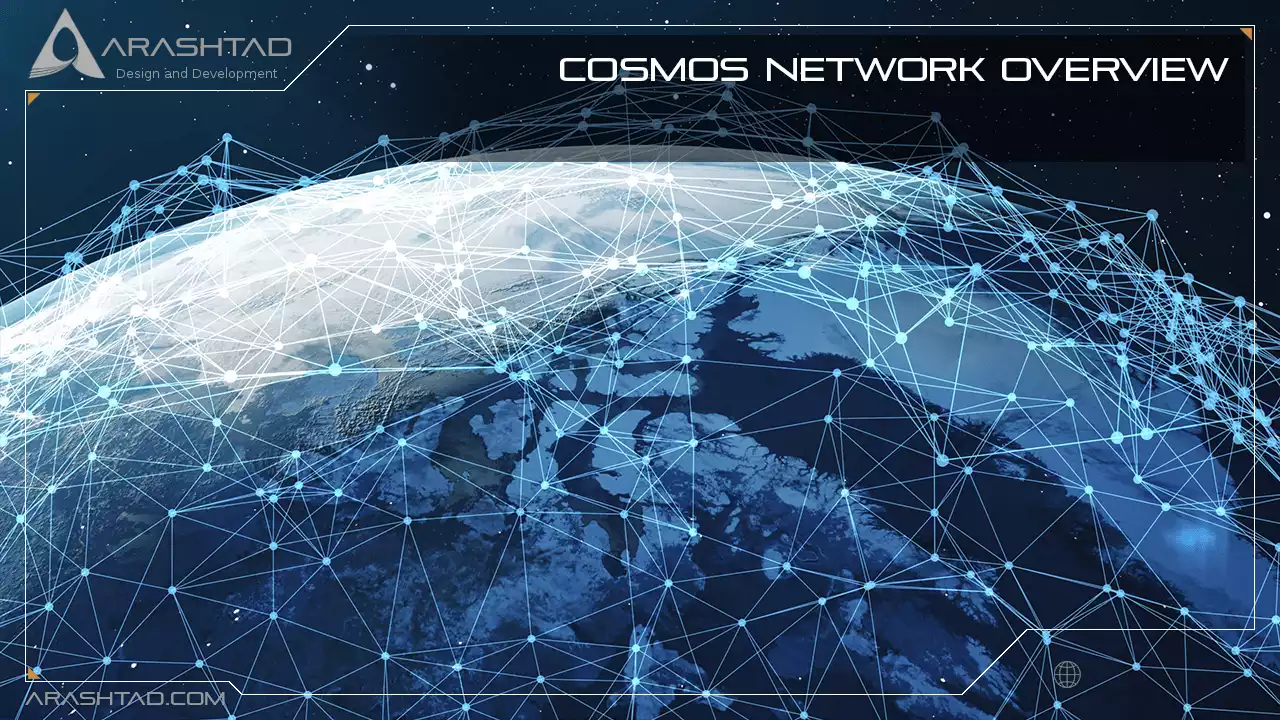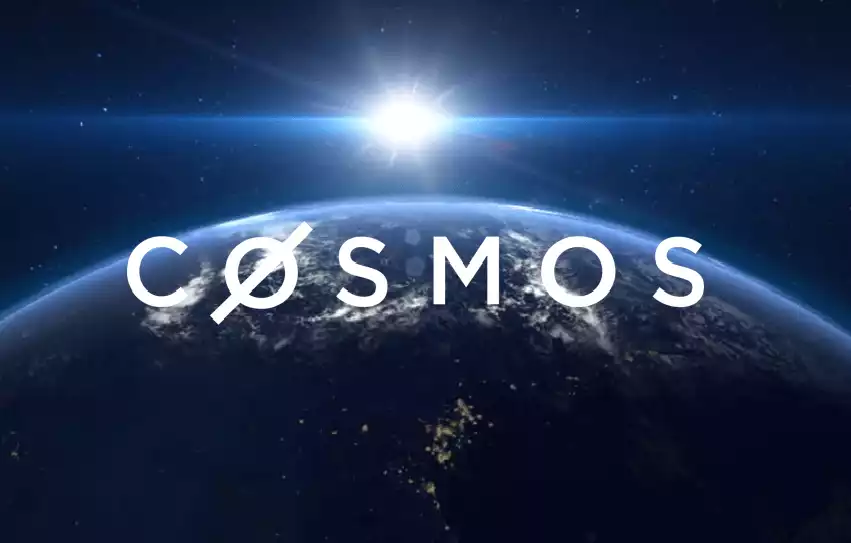Cosmos Network Overview
Cosmos network was developed In order to simplify communication between distributed ledgers without using a centralized server. It was established in 2016 as a white paper, and its founders immediately referred to it as the Internet of blockchains, as they sought to create an interoperable platform of open-source blockchains that could streamline transactions. In this article, we will get familiar with all about Cosmos network and how it makes a difference in the world of Blockchains.
Cosmos Overview
For developers, interoperability has been a challenging task since blockchain was created. As an example of interoperability, consider emails from a Gmail account communicating with a Hotmail account. If Android phones are allowed to share data with Apple’s iOS, then single structures are created first, as in the case of a specific blockchain. However, it is still necessary to get these systems to communicate. Otherwise, they aren’t much use and may prevent technology adoption.The Cosmos platform manages more than $151 billion of digital assets across multiple platforms, including Binance Chain, Terra, and Crypto.org. Cosmos (ATOM) is a cryptocurrency that powers and secures a blockchain ecosystem designed to scale and collaborate.
Cosmos Hub
Tendermint Byzantine fault tolerance (BFT)
To secure the network, Cosmos SDK tools use the Tendermint Byzantine Fault Tolerance (BFT) engine consensus protocol by default. developers can also use other consensus protocols with Tendermint BFT. In order to build blockchains without writing code, developers use the Tendermint BFT algorithm. to connect to applications, it uses the application blockchain interface protocol to validate transactions and execute blocks on the blockchain.Using a proof-of-stake (PoS) governance mechanism, the protocol integrates the distributed network of computers running Cosmos Hub. Participants can stake ATOM and earn rewards. the top 100 stakers can become validator nodes to power the blockchain and vote on changes. the more ATOM the validators stake, the greater their voting power. Validators can also be delegated tokens and interchanged. Users can easily switch between the validators they delegate ATOM to, depending on their voting preferences. This incentivizes them to perform honestly. IBC, the Inter-Blockchain Communication protocol, allows hubs and zones to communicate with each other.
Inter-Blockchain Communication protocol
Through IBC, messages can be transmitted securely between heterogeneous blockchains/zones and connected to the Cosmos hub. As a result of this innovative process, users can freely and securely exchange assets and data across sovereign (autonomous) and decentralized blockchains. In order to become interoperable, chains need to connect to the Cosmos Hub as a service provider. No matter what their functions and business objectives are, sovereign blockchains can communicate and exchange data regardless of their applications, validators, and consensus mechanisms. It is possible to build any cross-chain application using the IBC for Cosmos blockchains, including crypto-token transfers, nonfungible token transfers, and cross-chain smart contracts.Blockchains Built on Cosmos SDK
Terra
As Cosmos’ biggest and most prominent blockchain, Terra suffered a death spiral, which prompted its community to develop a new fork. Terra was built around its stablecoin Terra USD (UST), the third largest stablecoin based on market cap. It had around $30B TVL at its peak. Which makes it the second largest DeFi blockchain — only behind Ethereum.Terra Crash
Terra’s crash has impacted DeFi in a far-reaching way. perhaps compounded by poor macroeconomic factors, DeFi has lost 40% of its TVL. Osmosis, which contains most of the Cosmos ecosystem’s TVL, saw its TVL drop from $877M to $300M (-65%). Nonetheless, the Cosmos community quickly offered support for Terra and its developers. Some even offer grants (Juno, Secret) to help developers continue their work.Cronos
As a result of the Inter-Blockchain Communication (IBC) protocol and the Ethereum Virtual Machine (EVM) compatibility of the Cronos blockchain, the Ethereum and Cosmos ecosystems can be interoperated. As a parallel blockchain to Crypto.org’s own, Cronos will allow developers to port over EVM-compatible applications and assets. At the same time provides users with access to the Crypto.com ecosystem and interoperability with the rest of Cosmos.Osmosis
Aside from being the largest Automated Market Maker (AMM) on Cosmos, Osmosis is an application-specific blockchain. With Osmosis, developers are able to create sovereign liquidity pools with customized parameters. These parameters include bonding curves and multi-weighted asset pools. It introduces the concept of “AMMs as serviced infrastructure”. Which enables pools to be optimized based on market conditions.Juno
In the Cosmos ecosystem, Juno is a smart contract network with permissionless interoperability. the “sister hub” of Cosmos, all ATOM stakeholder holders received 47% of the genesis supply at a 1:1 ratio. According to their documentation, Juno offers developers an environment. Smart contracts of which can be deployed in a decentralized and permissionless manner.Cosmos vs. Ethereum
Despite the fact that Ethereum developers have supported the switch to PoS for years, the platform continues to use a PoW consensus algorithm, which makes it less sustainable than Cosmos. Scalability is another major issue for Ethereum. Ethereum transactions can sometimes take hours to execute. Due to Cosmos Tendermint BFT’s proof-of-stake algorithms, thousands of transactions can be processed per second. This makes everything much faster and cheaper than Ethereum’s gas fees, which can be quite high at times.To build the entire ecosystem on Ethereum, permissionless smart contracts with specific functions are used to handle complex financial instruments. Cosmos’ smart contracts or applications are essentially blockchains themselves, so they won’t interfere with each other while ensuring a smooth transaction process.There are a few advantages to Cosmos. First of all, its developer-friendly design for rapidly and cheaply building sovereign blockchains. In addition, its interoperable system makes it possible to communicate between blockchains. Ethereum does not allow this unless you exchange wrapped tokens in an insecure manner. Regardless of its popularity as a blockchain, Ethereum still remains the favorite platform of DeFi, NFTs, and the Metaverse. Which represents blockchain’s most trendy features at the moment and for many years to come.
Wrapping Up
In spite of tepid market conditions, Cosmos remains a crucial platform for web3 technology and applications interoperability. Cosmos provides developers with a conducive environment to launch application-specific networks quickly and at scale with the Cosmos SDK, Tendermint BFT, IBC, and the recently released Cosmos Hub Interchain Security. Hence, we will keep a close eye on Cosmos and look forward to seeing more developments in the future.Download this Article in PDF format

Arashtad Custom Services
In Arashtad, we have gathered a professional team of developers who are working in fields such as 3D websites, 3D games, metaverses, and other types of WebGL and 3D applications as well as blockchain development.
Arashtad Services
Drop us a message and tell us about your ideas.
Fill in the Form
Blockchain Development


